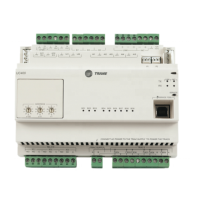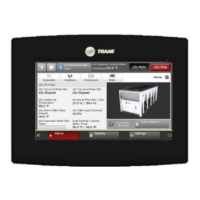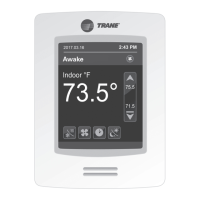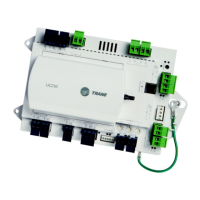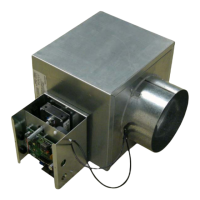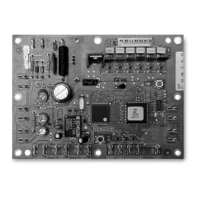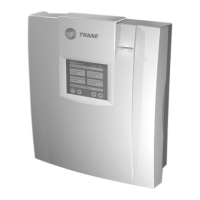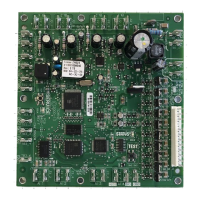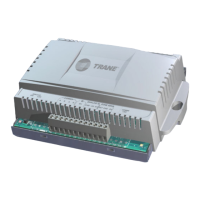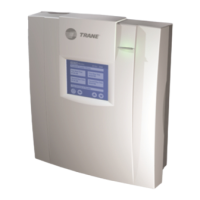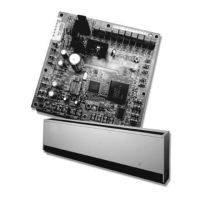Chapter 4 Sequence of operation
44 CNT-SVX05B-EN
pied) after 15 minutes (configurable, specified by the “receive heartbeat
time”), if no local hard-wired occupancy signal exists.
Occupancy binary input
The Tracer AH540/541 controller uses the occupancy binary input IN9 for
two occupancy-related functions. For controllers not receiving a communi-
cated occupancy request, the occupancy binary input determines the
occupancy of the unit based on the hard-wired signal. Normally, the sig-
nal is hard-wired to a binary switch or time clock.
When a hard-wired occupancy signal is open, the unit switches to occu-
pied mode (if the occupancy input is configured as normally open). When
a hard-wired occupancy signal is closed, the controller switches to unoccu-
pied mode.
For controllers that receive a communicated occupancy request from a
building automation system, the hard-wired occupancy binary input is
used with a communicated occupancy request to place the controller in
either occupied mode or occupied standby mode.
In occupied mode, the controller operates according to the occupied set-
points. In occupied standby mode, the unit controller operates according
to the occupied standby setpoints. When the controller receives a commu-
nicated unoccupied request, the controller operates according to the unoc-
cupied setpoints regardless of the hard-wired occupancy input state.
If neither the hard-wired binary input nor a communicated request is
used to select the occupancy mode, the controller defaults to occupied
mode because the occupancy binary input (if present) typically is config-
ured as normally open and no occupancy device is connected.
Determining the occupancy mode
The occupancy of the controller is determined by evaluating the combina-
tion of three potential communicating inputs, as well as the hard-wired
occupancy input and the occupied bypass timer (see Table 16 on page 39).
Three different communicating inputs affect controller occupancy mode:
• Occupancy—manual command
• Occupancy—schedule
• Occupancy—sensor
These inputs provide maximum flexibility, but the number of inputs you
decide to use varies with the application and the features available in
your building automation system.
Occupancy—manual command
Some communicating devices may request occupancy based on the infor-
mation communicated in the network variable (nvoOccManCmd). Trane
systems and zone sensors do not communicate this information to the
controller, but the Tracer AH540/541 controller accepts this network vari-
able as communicated input (nviOccManCmd).
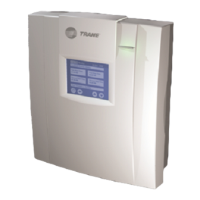
